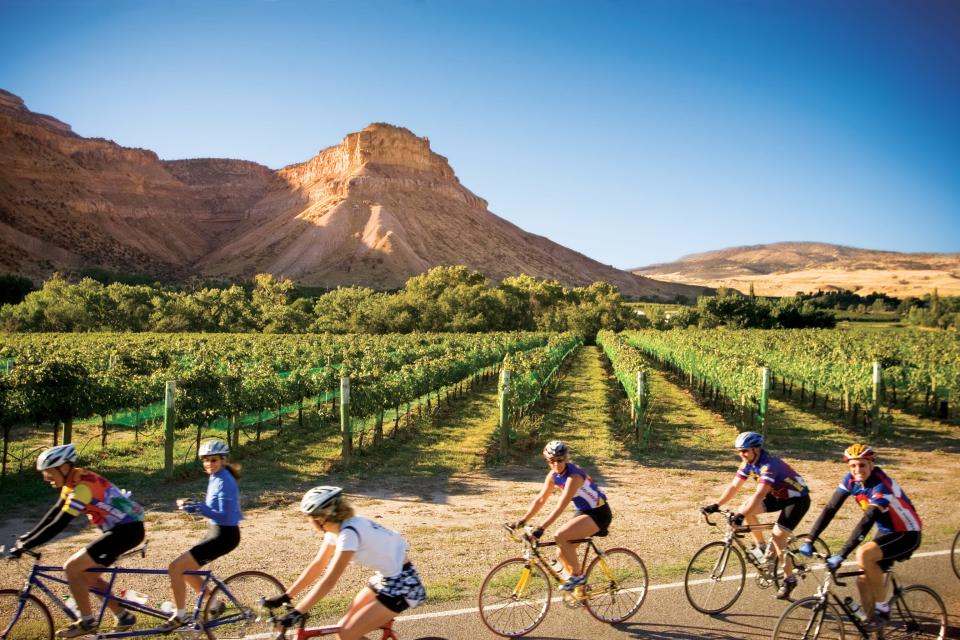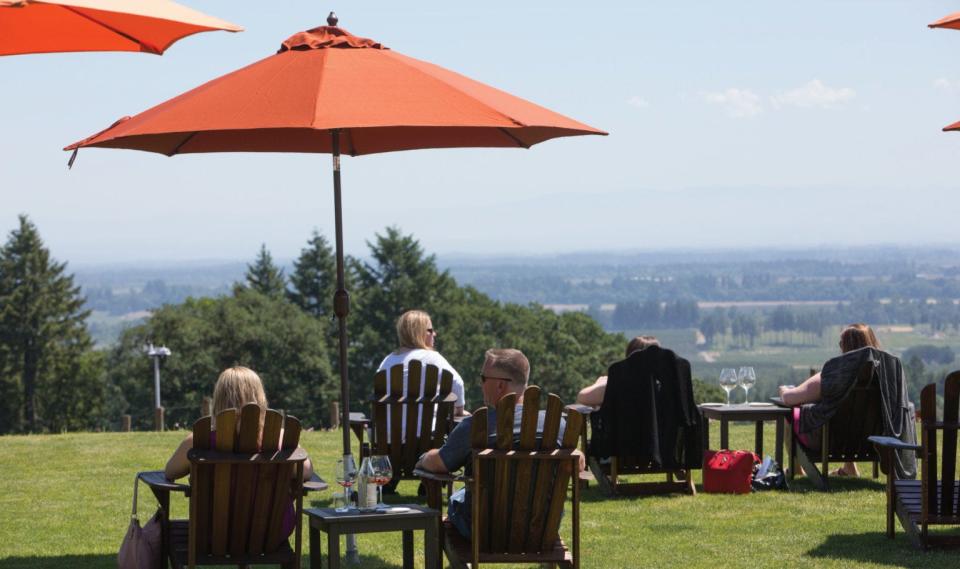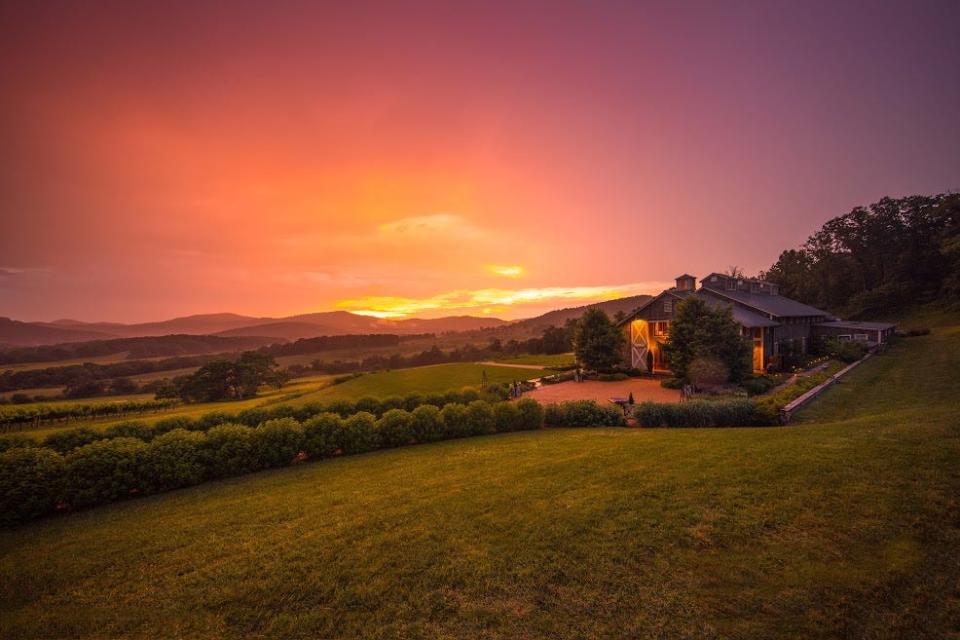Beyond Sonoma: Check out wine country in Oregon, Colorado, Virginia and Pennsylvania
Although you may be physically ready to travel again after getting vaccinated, you may not feel entirely ready – or comfortable – enough yet to visit touristy destinations along with peak-season crowds.
If you’re an experienced wine enthusiast or just an aspiring collector hoping to grow your at-home wine collection but aren't ready for crowds yet, the answer may be visiting a lesser-known wine region. Just keep in mind your wine-tasting and winery visits may be different that you’re used to. But that can be a good thing.
"The wine tasting experience has become more consumer focused and intimate, with smaller groups of people at each tasting and reservations now being required,” says Kim Pasquali, the head of guest experiences at Medlock Ames, a wine producer and tasting room located about an hour northwest of Sonoma, California. “With these smaller group tastings, wineries have the opportunity to offer more one-on-one time with each guest, making the wine-tasting experience more in-depth and tailored to their interests and knowledge.”
Despite loosening COVID restrictions across the country, Pasquali believes that the trends of wineries offering seated tastings and requiring reservations will continue. Why? Purveyors have come to appreciate the way those practices have organized the flow of consumers to their tasting rooms.
“Wineries are beginning to offer tasting events again, which will give guests the option to attend some larger gatherings that were so crucial to the atmosphere of Wine Country,” Pasquali says. “At Medlock Ames, we are loosening restrictions as we reopen by welcoming dogs back to the property and creating family-friendly experiences, so we can welcome more guests and their loved ones."
While Sonoma is renowned as the heart of California wine country, it's by no means the only U.S. wine region worth visiting. Here are some under-the-radar spots where you can sip and savor and revel in enriching and fun wine experiences.
Grand Junction and Palisade, Colorado
.

Why its wines are worth your time: Often we think of Colorado for skiing, hiking and outdoor experiences, but there’s an exciting wine culture there waiting to be discovered. Shaded by red rock cliffs, Grand Junction, Palisade and the area outlying Colorado's Grand Valley is home to nearly 30 wineries and vineyards
The region produces interesting wines, as the unique climate is created by the heat that from the Book Cliffs, and water from the Colorado River, and cool evening climate. The produce of the region sparks rich in flavor from the bounty of peaches, plums, apples, apricots, and cherries that flourish there. And of course there’s an abundance of grapes, which can be found in its Rieslings, Viogniers and Cabernet Sauvignons.
When to go: If you are looking to try wine in September, make plans to visit the Colorado Mountain Winefest (Sept. 18-19), which features chef’s demonstrations, educational experiences and of course, wine activities galore.
Where to go: If you plan a visit, some of the key players are Restoration Vineyards, Mesa Park Vineyards, Colterris, The Storm Cellar, Maison la Belle Vie and Red Fox.
If you like yours bubbly, try Sauvage Spectrum, a newer brand that also produces sparkling wines. Venture out of the tasting rooms to taking in the breathtaking scenery from the patios. You can even opt for bottle service out among the vines (reservations required 3 days in advance), an ideal option for safe and socially-distanced sipping.
Another gem in Grand Junction is Two Rivers Winery, featuring a large chateau where you can stay and look out your window to see the vibrant colors of the Colorado National Monument.
What else to do: When you are done sipping for the day, there's water sports galore – Grand Junction sits right at the confluence of the Colorado and Gunnison rivers. There are also trails for biking and hiking you can explore.
Where to stay: After a day of fun, settle in at the new Hotel Maverick. Located on the campus of Colorado Mesa University, which offers complimentary cruiser bikes for guests, is pet-friendly and boasts spacious grounds to wander.
Willamette Valley, Oregon

Why its wines are worth your time: A 45-minute drive from Portland, the Willamette Valley, best known for producing premier Pinot Noir, is Oregon’s leading wine region, boasting over 670 wineries. As visitors begin revisiting the region to experience the wine culture, businesses have adapted their experiences to be outdoor and socially distanced.
Where to go: Pinot Noir lovers will enjoy tasting around the Dundee Hills. A favorite of locals is Adelsheim Vineyard which features a beautiful tasting room. In addition to wineries, don’t miss the breweries, cideries, meaderies, or distilleries the region has to offer.
Where to stay: After a day of wine tasting and exploring, enjoy a restful evening at the Independence Hotel, a boutique hotel on the Willamette River, in the heart of wine attractions.
What else to do: When you're not winery-hopping, explore the region’s biking and hiking trails, then visit an art gallery or float in a hot-air balloon.
Bucks County, Pennsylvania

Why its wines are worth your time: Picturesque Bucks County is just 35 miles from Philadelphia, 75 miles from New York City and 170 miles from Washington, D.C. making a perfect meeting point for friends scattered across different East Coast cities to meet. Wineries in Bucks County have plenty of outdoor seating space to sip and enjoy the region's wines, which include Chardonnays, Pinot Grigios, Vidal Blancs, Cabernet Francs, Cabernet Sauvignons and Chambourcins.
When to go: Planning is to take a summer wine trip? Wine enthusiasts can grab a “Passport to Bucks” from the Bucks County Wine Trail now through Aug. 31. The participating wineries will offer one of the following at their discretion: A complimentary wine flight (a selection of several tasting portions of several wines), wine tasting or a micro-tasting. Because of COVID-19 and limited indoor capacities, this year’s Passport to Bucks will be held primarily outside, making it easier to social-distance.
Where to go: Make sure to plan to see Crossing Vineyards and Winery, located on a 200-year-old estate less than a mile from the place where George Washington crossed the Delaware River in 1776; Sand Castle Winery, which grows European vinifera grapes on 72 acres overlooking the Delaware River; and Bishop Estate Winery & Vineyard, which is set in a historic and scenic setting.
What else to do: While in New Hope, which boasts galleries, shops and outdoor dining spots, plan to see a show at the charming Bucks County Playhouse.
Where to stay: After a day of winery visits, try the Inn at Barley Sheaf Farm – where sheep are on the property to pet. For more of a splurge, consider the River House at Odette’s in New Hope.
Charlottesville, Virginia

Why its wines are worth your time: Another wine destination to visit on the East Coast is Charlottesville, situated against the scenic rolling hills of the Blue Ridge Mountains in Central Virginia. Charlottesville and Albemarle County are home to the Monticello Wine Trail, which features more than 35 wineries.
The admiration that this region has for wine can be traced back to Founding Father Thomas Jefferson. The third president, whose Monticello estate inspired the trail's name, hoped that the region's wines would someday rival those of Europe. Today, a winery bearing his name stands on the very ground where he and viticulturist Philip Mazzei planted grapes 250 years ago. The region has come to be known for its Rieslings, Gewrütztraminers, Viognier, Pinot Gris, Rosés and Cabernet Francs.
Where to go: What’s interesting is that wineries have unique personalities and the ambiance varies from winery to winery. Some feature very intimate and unique tasting spaces, and others offering up more spacious areas, better suited to large groups. For example, at Glass House Winery, visitors can sip wine in a greenhouse, while at Blenheim Vineyards, they'll sample flavors at a chalet-style structure designed and owned by musician Dave Matthews, a longtime Charlottesville resident.
What else to do: To compliment your wine-exploration, try a cooking class at Pippin Hill Farm & Vineyards, which is far more than just a winery. It’s a cohesive agricultural destination incorporating vineyards, a farm, an expansive kitchen, plus gardens managed by an on-site horticulturist. The Charlottesville area is also home to craft breweries as well as several artisanal cideries and distilleries.
Where to stay: Popular lodging options are the Boar’s Head Resort, the Omni (on the downtown pedestrian mall) and the Oakhurst Inn, for more of a boutique, upscale experience.
This article originally appeared on USA TODAY: Wine country outside of California: Colorado, Virginia, Oregon, more

